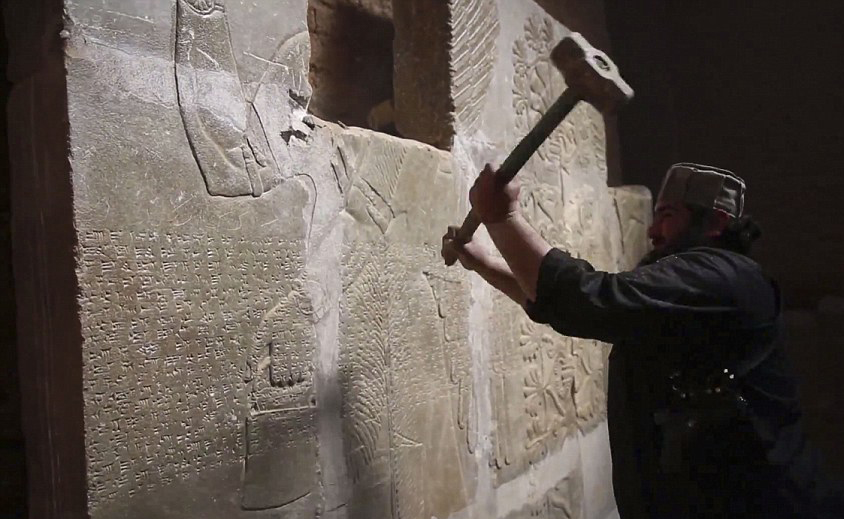The self-styled Islamic State terrorist group (also known as ISIS or Daesh) no longer occupies the archeological site of Nimrud, Iraq, but the city and its treasures remain in danger as looters continue to ransack its artifacts, according to a special report by AP.
Nimrud was once a capital city of the Assyrian empire and it has been a treasure for scholars and tourists alike, known for its striking reliefs, sculptures and traditional architecture.
“What’s significant about Nimrud is it’s, I believe, the second capital to be built,” Christopher Jones, a PhD student at Columbia University who has been documenting damage to ancient sites in Iraq, told Travel + Leisure.
“It’s where we get a lot of our information about the earlier parts of the 9th century onwards, when Assyria starts to become an empire.”
As Syrian and Russian forces remain engaged in a tactical war against IS in other cities, Nimrud is still exposed to ransacking. Forces from IS left the site more than a month ago and looters have quickly come in to scrounge up any remaining artifacts.
AP journalists reported seeing certain cuneiform tablets and other artifacts disappear within weeks of their arrival.
Not all experts are convinced the looting is organized or for the sake of profit on the black market, however. Michael Danti, the director of the cultural heritage initiatives program at the American Schools for Oriental Research, said the allegations of looting might be more nuanced than they appear.
Danti suggested that locals might be taking items either with the intent to protect or under the guise of preserving artifacts from criminals and militants.
“They’re not verified reports. I believe it; but I need to see it,” Danti told T+L of the reported looting, saying only satellite images could prove AP’s claims. IS used explosives to systematically destroy Nimrud in spring of 2015, reducing most of the architecture, including the ziggurat or step pyramid, to rubble. They have also targeted the ancient Syrian city of Palmyra, which is seen as a cradle of eastern and western civilizations.


